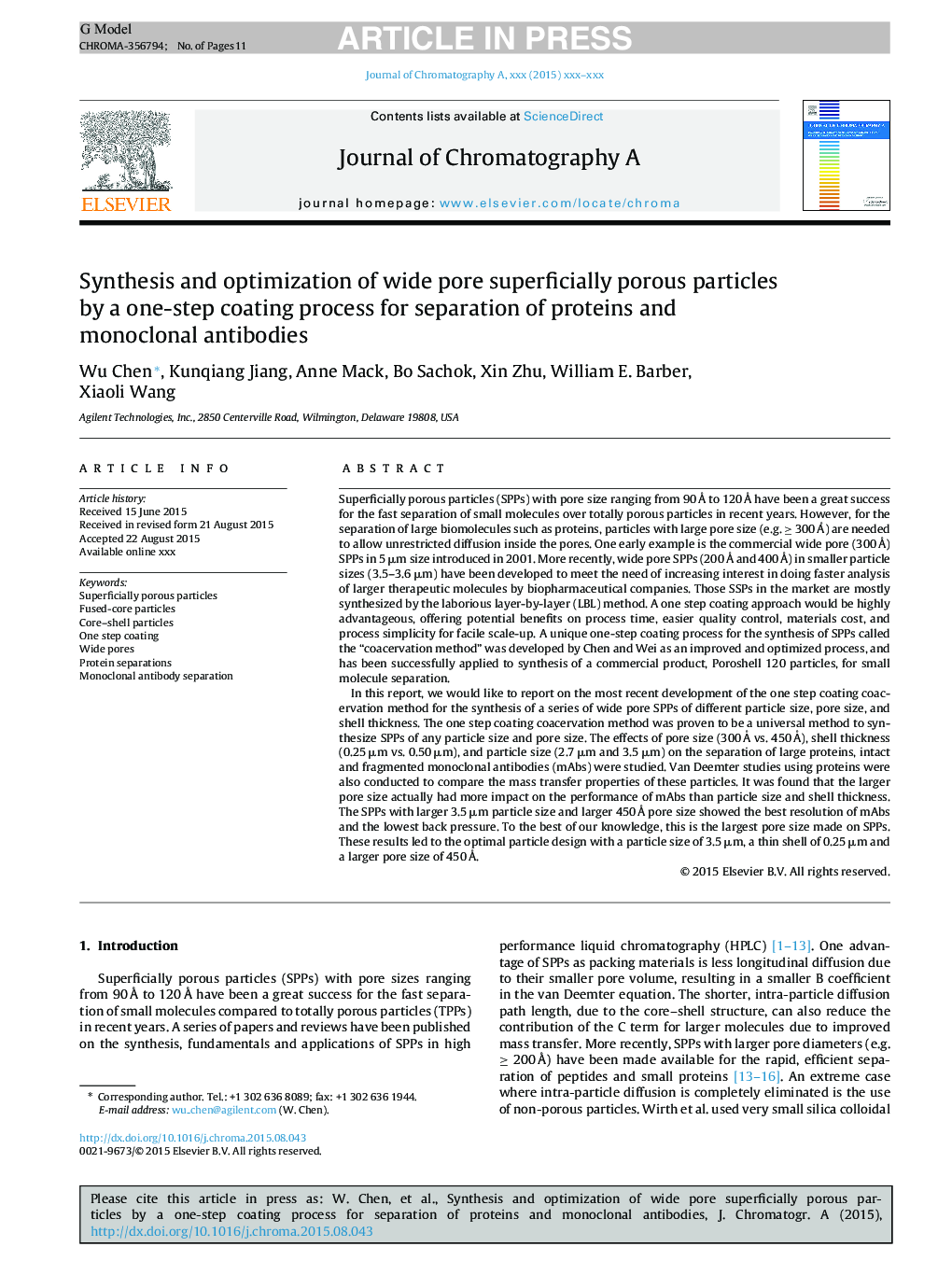| Article ID | Journal | Published Year | Pages | File Type |
|---|---|---|---|---|
| 7611410 | Journal of Chromatography A | 2015 | 11 Pages |
Abstract
In this report, we would like to report on the most recent development of the one step coating coacervation method for the synthesis of a series of wide pore SPPs of different particle size, pore size, and shell thickness. The one step coating coacervation method was proven to be a universal method to synthesize SPPs of any particle size and pore size. The effects of pore size (300Â Ã
vs. 450Â Ã
), shell thickness (0.25 μm vs. 0.50 μm), and particle size (2.7 μm and 3.5 μm) on the separation of large proteins, intact and fragmented monoclonal antibodies (mAbs) were studied. Van Deemter studies using proteins were also conducted to compare the mass transfer properties of these particles. It was found that the larger pore size actually had more impact on the performance of mAbs than particle size and shell thickness. The SPPs with larger 3.5 μm particle size and larger 450 Ã
pore size showed the best resolution of mAbs and the lowest back pressure. To the best of our knowledge, this is the largest pore size made on SPPs. These results led to the optimal particle design with a particle size of 3.5 μm, a thin shell of 0.25 μm and a larger pore size of 450 Ã
.
Related Topics
Physical Sciences and Engineering
Chemistry
Analytical Chemistry
Authors
Wu Chen, Kunqiang Jiang, Anne Mack, Bo Sachok, Xin Zhu, William E. Barber, Xiaoli Wang,
